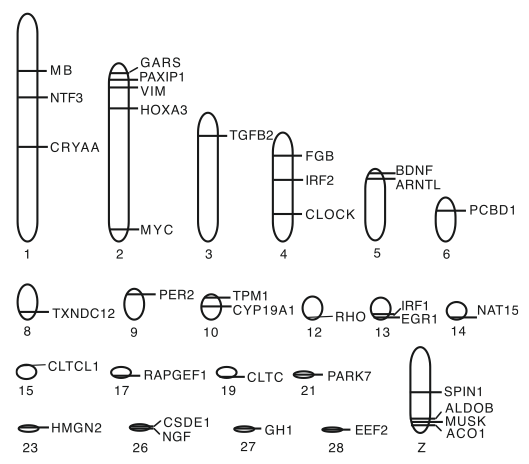Early Bird and Deep Avian Phylogenetics
Hackett et al. (2008) presented analyses of 19 loci from 169 avian species (for a total of more than 3 Mbp). We found a number of well-supported and novel relationships in the avian tree of life. These include:
- A “land bird” clade that contains the perching birds, woodpeckers and allies, hawks and falcons, owls, kingfishers, hornbills, and allies, parrots, mousebirds, and trogons
- A “water bird” clade, which includes members of the web-footed birds, storks and allies, tube-nosed birds, penguins, and loons
- A strong support for more derived groupings, some of which have been suggested previously, such as a sister relationship between grebes and flamingos (van Tuinen et al. 2001)
- Tinamous nest within ratites (ostriches and allies) contrary to previous well-accepted hypotheses (also see Harshman et al. 2008)
- Diurnal hummingbirds and swifts nest within the nocturnal and crepuscular nightjars and their allies
- Woodpeckers and allies nest within the kingfishers, hornbills, and allies
- Definitive placement of several unique lineages, such as the New World vultures grouping within the land birds, refuting their sister relationship with storks (contra Sibley and Ahlquist 1990)
- The seriema, traditionally thought of as an ally of the rails that exhibiting convergent characters with the birds of prey, actually groups within the land bird clade as do other birds of prey or raptors
- One of the most intriguing relationships we find is that the perching birds are sister to the parrots, a relationship that has not been suggested previously
For additional details of relationships within the larger tree of life and the birds in particular, see the Tree of Life Web (Early Bird collaborator John Harshman is contributing to the bird pages on the Tree of Life Web).
For additional information about the Hackett et al. (2008) study, download the full text of the paper, the supplementary information, a Science podcast by corresponding author Rebecca Kimball, and a news focus by Elizabeth Pennisi.
Nuclear Loci for Avian Phylogenetics and Pop Gen
Details regarding 36 nuclear loci used for the Early Bird project, many of which were developed for the project, are provided in Kimball et al. (2009). Most of these primer sets amplify non-coding regions (primarily introns) and nine loci include multiple primers sets that can be used to obtain long genomic regions (that include multiple introns and exons).
For additional information about the Kimball et al. (2009) loci, download the full text of the paper. The paper contains information about how robustly the loci amplify in a variety of birds; other research groups have even begun to test the primer sets in other groups of vertebrate (e.g., Spinks et al. 2010) suggesting they may have broad applicability in ecological and evolutionary studies. Also note that information about some additional loci that have been less extensively tested is available from Cox et al. (2007) and Bonilla et al. (2010); loci described in these manuscripts are known to perfom well in galliform birds. 